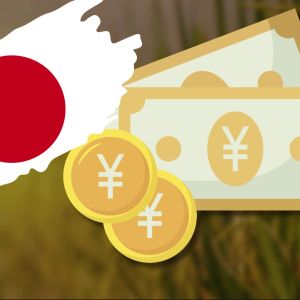Hedge funds are now aggressively betting that the yen is about to punch through its months-long range and jump hard against the dollar, according to data from Bloomberg. The currency has been stuck around 147 per dollar, but recent options activity shows traders are building positions to profit if it strengthens beyond 145. On August 26, the volume of dollar-yen puts was four times higher than calls, meaning leveraged investors expect Japan’s currency to break higher fast. Several events triggered this turn. First, President Donald Trump fired Federal Reserve Governor Lisa Cook, pushing traders to expect more pressure on the Fed to cut rates. At the same time, France is dealing with a possible no-confidence vote, increasing demand for safer assets like the yen. Then there’s the upcoming U.S. payrolls report, which could show a slowdown and add more bets that the Fed will be forced to ease. Traders build massive downside dollar-yen structures Mukund Daga, who runs Asia FX options at Barclays in Singapore, said hedge funds have started buying downside dollar-yen positions in reaction to all the political headlines. “Post the flurry of news articles, including a potential no-confidence vote in France as well as the joust that Trump and Lisa Cook find themselves in, we’ve finally seen some interest picking up in owning USD/JPY downside optionality by a certain sector of the hedge-fund community,” he said. On the same day those headlines broke, the most active strike price on the put side was 144.93 for September expiries. The pair had closed at 147.05, and traders were clearly expecting it to drop. These puts become more valuable if the yen rises past the strike. It wasn’t just Barclays seeing this setup. Graham Smallshaw, a senior spot trader at Nomura Singapore, confirmed that since Jerome Powell’s speech at Jackson Hole, short-term downside bets have picked up. “The fast-money community has started to position once again with USD/JPY downside structures, particularly in the one- to two-month tenor in the form of digitals and outright puts,” Graham said. Those digital put options are a cleaner way to bet on a drop in the pair. They pay out a fixed amount if the dollar-yen falls under a certain level. Besides, more catalysts are coming this week. Japan’s labor cash earnings data is due Friday. If it shows wages rising, it could support the case for a Bank of Japan rate hike. Kazuo Ueda, the central bank’s governor, said at Jackson Hole on August 23 that the tight labor market in Japan continues to push wages up. That’s the kind of data that strengthens the yen fast. On the flip side, the U.S. jobs report is also due. If it’s weak, the dollar comes under pressure again and adds to the upward move in the yen. Japanese firms cut capex as tariffs drag on exports While traders are watching the options screen, Japanese businesses are feeling the heat. The Finance Ministry said capital spending on goods, excluding software, rose only 0.2% in the second quarter. That’s way down from the 1.3% gain reported in the preliminary GDP print. The revised GDP data, which drops on September 8, will reflect this slower investment pace. Over a longer time frame, things look a bit better. Year-on-year, investment including software grew 7.6%, beating the 6.1% median forecast. But short-term momentum is slowing. Company profits inched up just 0.2% and sales rose 0.8% from last year. This all ties back to tariffs. During Q2, the U.S. increased auto duties on Japan by another 25% and warned about slapping a 25% universal levy on a wide range of Japanese goods. In July, both countries agreed to cap auto and general tariffs at 15%, but the deal hasn’t been put in motion yet. Exporters are struggling. Japan posted its biggest export drop in over four years in July, marking the third straight month of decline. Companies are absorbing much of the tariff hit themselves, eating into profits just to hold on to customers. That’s making it harder to justify pay raises, even as the Bank of Japan wants higher wages to support inflation targets. A major part of the Japan-U.S. trade deal is a $550 billion investment mechanism that’s drawing fire at home. Critics are warning that Japanese firms could end up redirecting funds toward projects in the U.S., sidelining their local operations. That concern is growing as more companies prioritize U.S.-based expansion over domestic spending. Get up to $30,050 in trading rewards when you join Bybit today
 Here’s Why XRP Price Is Crashing Today
Here’s Why XRP Price Is Crashing Today










